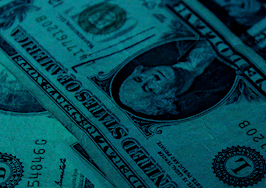Only two financial markets moved this week: oil, Brent crude reaching $80/bbl, and long-term rates rising decisively, the 10-year T-note to 3.12% taking mortgages within an inch of 5.00%.
The two moves are not linked. Oil is up because an excess in storage has been drawn down, and the Saudi/Russia combine has one foot on the hose — not a true crisis of supply. The higher price will attract new supply and reduce demand, and the contribution to inflation will be minor, crowding out consumer spending on other things.
Bonds and mortgages are relaxed about oil because they are worried about something else. The Fed.
(Political sidebar: last week this space included a list of the major issues which could have big effects on markets, good or poor, each impossible to handicap and hence freezing markets. Trade, Korea, Iran, the budget and borrowing. In the last week each one has gone from high heat to unresolved fizzle, leaving markets exhausted, confused, and just as wary.)
The Fed. Everyone who notices interest rates has heard of the possibility of an “inversion,” short-term rates driven by the Fed above long-term ones — a splendid predictor of recession ahead. However, the progression from a little rate-hiking to recession is anything but straight-line, and bonds gave us other, solid clues this week.
The 2-year Treasury note is the Fed telltale. The 10-year T-note is the driver behind mortgages, which have a half-life of roughly six years, even if 30-year loans because refis and home sales shorten actual maturity. And the 30-year T-bond is the ultimate indicator of future inflation. Movement among these three instruments relative to each other this week brought exceptional clarity.
Last week the spread between 2s and 10s narrowed to the smallest gap in this cycle, 44bps (in bond speak “basis points” are one-hundredth of one percent, written as “bps,” and spoken as beeps — hence 44bps). 2s had risen to 2.54% in anticipation of more Fed hikes (the Fed now 1.75%, going to at least 2.25% by year-end), while 10s were stuck at 2.98%.
Narrowing spread… inversion soon? Uh-uh. The Fed’s pressure from underneath suddenly on Tuesday pushed 10s to 3.12%, re-opening the spread to twos, unchanged at 2.55%, spread out to 57bps. From here, so we will continue: 2s rising with the Fed causing intermittent hops in 10s — until 2s finally do close on 10s, signaling the end. More on The End below.
Meanwhile, the 10s-to-30s spread tells a different story. Go back one year and 10s traded 2.25% while 30s were 2.90%. Today at week’s end, 10s are 3.07% and 30s are only 3.21%. In the last year the 10s-30s spread has narrowed from 82bps to only 14bps. Twenty years of additional risk, and my reward is 14 whole bps? That spread closure is emphatic testimony that inflation is not a risk, and rates are rising solely because of the Fed’s effort to pre-empt economic overheating and the potential for future inflation. 10s and 30s so close is the next-best indicator after 2s-10s inversion as a sign that the Fed is approaching The End.
Way back in the 1950s-1960s, the Fed spoke of these hiking cycles as “fine-tuning.” By the early 1970s, “fine-tuning” had failed so badly that it became a term of derision. Overconfidence exposed, from the 1970s forward we used “soft landing” as the hopeful objective for Fed tightening, despite Fed-induced crash after crash. The only period of soft landing on record: in 1994 the Fed hiked from 3.00% to 6.00%, in 1995 backed off to 5.50% and escaped recession for four more years despite very narrow (“flat curve”) 2s-10s-30s spreads.
The US economy 1994-1999 was most unusual, in the first stage of the IT explosion — productivity, wealth creation, and low inflation. Also the “peace dividend” at the end of the Cold War reducing military spending in the budget, and enlightened tax and spending policy which led to budget surpluses (!!). Nothing enlightened now.
Enter new Fed vocabulary: “terminal.” Ouch. Terminal could be the place to catch an airplane or train (my Okie forbears said, “depot”). Or various illnesses including The End. The new Fed usage intends “the end,” but not that end, just the end of rate hikes.
How close are we to the end? Well, that depends. One end would be the Fed achieving soft landing, job creation falling to a sustainable level (relative to labor force growth), maybe 80,000 per month, inflation stalling at or a little above 2%, GDP settling to 1.8% growth.
Given only one soft landing on record, odds favor a different end: with the best of intentions the Fed will hike onward until we discover that a recession began four months ago.
To the impertinent question, how close are we? Spreads say that the Fed is now past neutral on the tight side, leaning into growth — or will be for sure with the next two hikes to 2.25% baked into the 2018 cake.
We never know how much Fed leaning the US economy can take, or for how long, but the outside world is likely to fracture before the domestic economy. In a globalized world, the Fed tightens for all.
US 10-year T-note in the last year, now pushed up by the Fed, not inflation:

10-year T-note.
During a Fed hiking cycle the US 2-year T-note trades at a higher yield than the Fed’s overnight rate, anticipating future hikes. The Fed’s next hike could come at the June meeting, or not until the one at the end of July. Whichever, that next hike is built-in. Not the next, and next, and next, each of which will push up 10s and mortgages until… terminal.

2-year T-note.
With apologies for complexity, here is a combined chart of 2s-10s-30s from 1990 to present. The visual may help with the spread gibberish above. Or maybe not. The extended tight-spread 1990s soft-landing was very different from the short 2006 precursor of disaster.

2s, 3s, and 10-year T-notes combined.









